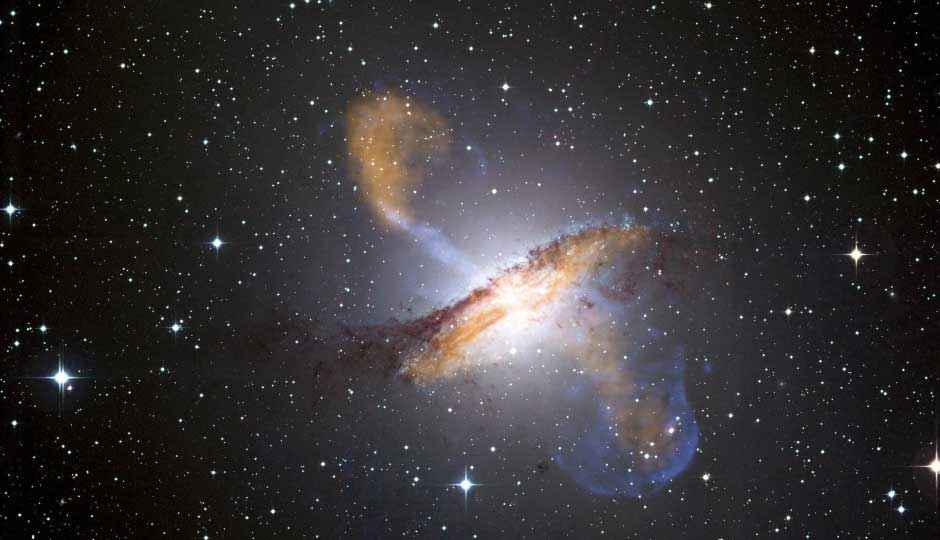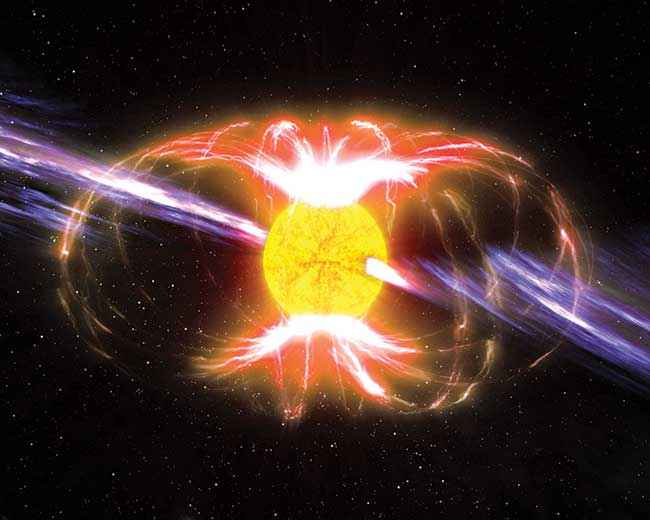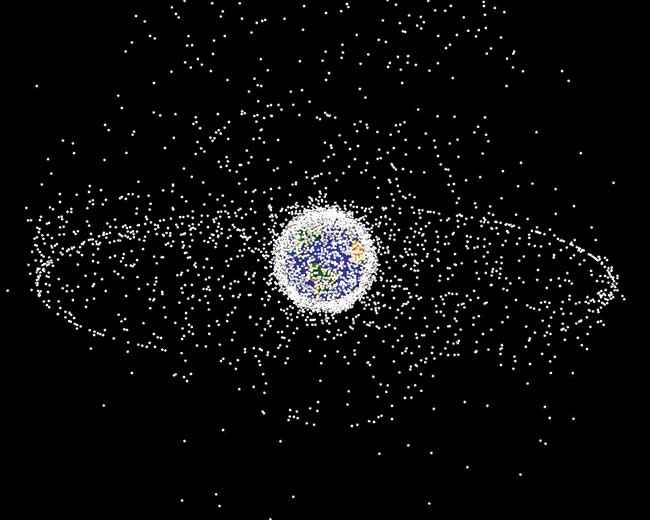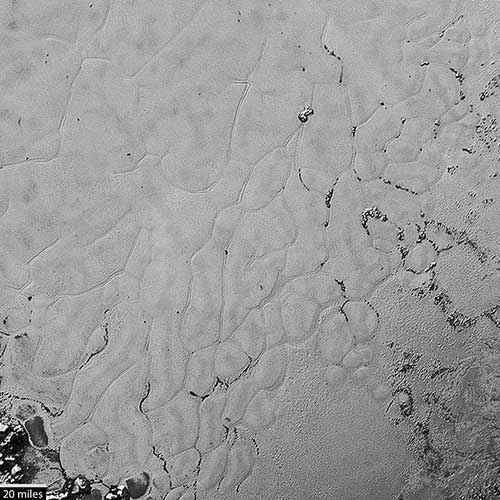10 space facts that sound like BS but are actually true
No, we aren't lying!

Space is an unforgiving place, inhabited by objects that push the limits of physics and human imagination. Even against that background, here are ten facts about space and our universe that at first will still sound like bullsh*t but are not.
 Survey
Survey1. One of the largest known structures in our cosmos is a hole and it’s so huge that you can fit 10,000 galaxies inside it
It is not surprising to read about a stellar body that is much larger than the Earth. In fact, what do you define as huge anymore? Jupiter is huge. A galaxy is huge, so much so that a mere planet is like a grain of sand in comparison. How about a hole as big as 10,000 galaxies? Scientists have reported the existence of a void in space that was missing about 10,000 galaxies. It has been pegged as one of the largest individual structures ever identified by humankind.
Christened as a ‘supervoid’ this ‘hole’ in space is not a vacuum but simply a region in space that is extremely barren, cold and devoid of mass. To put a number to how large the void is, imagine that you could travel at the speed of light (it’s blasphemy to even imagine that though) and wished to traverse the diameter of the hole. It would take you around 1,400 million years. To put things further into perspective, the largest man-made hole on Earth is in Utah, USA and it’s about four kilometers wide. The supervoid is roughly 10^14 times larger!
2. There are magnets in space that are powerful enough to break every chemical bond that exists in our body – from a thousand kilometres away
At the end of a star’s dying stages there sometimes occurs an explosion dubbed as a supernova, which under the right conditions results in the formation of a neutron star. Neutron Stars are very dense objects packed with neutrons and some protons. More importantly, neutron stars also rotate really fast. Closely packed charged particles rotating at an insane pace produce strong magnetic fields. A certain class of neutron stars, dubbed magnetars have magnetic fields so powerful that they would make our Earth bound magnets seem like kiddie toys. The most powerful magnet on Earth has a power of a few hundred thousand Gauss.
Magnetars have a magnetic field of the order of a trillion Gauss. That’s one trillion times the Earth’s magnetic field. Magnetars are so powerful that simply passing by one from a distance of a thousand odd kilometers would result in breakage of every chemical bond that exists in our body. Basically, if even one magnetar flew by the vicinity of Earth not only would every hard disk and credit card in the world would be erased, but every human being would be ripped to shreds and all atomic matter would be separated. That’s pretty macabre for a space object that has a name that sounds like a Pokémon.
An artist’s impression of a magnetar showing radio emissions and magnetic field
3. There is a cloud made of alcohol in space and no you cannot drink from it
While at first glance this might sound to be truly BS, if you think about it, alcohol is a fairly simple compound. It is made up of Carbon, Hydrogen and Oxygen and all three exist aplenty in space. The complex formation processes and chemistry that is found in interstellar gas clouds could be the birthplace of an alcohol cloud formation. And a process called quantum tunnelling can, in theory, explain how alcohol is formed even in the harshness of space. Alright, all good in theory, but did we actually find one?
As it turns out we’ve found plenty of such clouds. One such formation has 10 billion-billion-billion litres of space booze. Let’s not even try to comprehend that number. Another cloud formation is ‘just’ 6,500 light years away. In cosmic scales this particular cloud region named W3(OH) is practically our neighbour. So given a large enough straw, or a fast enough rocket, could we tap into the seemingly endless supply of alcohol? Unfortunately not. Most of the alcohol is methanol which we don’t consume for fear of death. There are traces of ethyl alcohol, but peppered between other toxic compounds. Ahh, space cocktail!
4. The amount of space junk orbiting the Earth weighs almost 16 times the International Space station!
The movie Gravity depicted an incident wherein a piece of space junk wrecked havoc with another Space mission. Although, the movie was fictional the problem is very real. Over the years, on account of the number of space missions carried out by countries on their space stations, our immediate outer space has become littered with space junk. Estimates peg the total mass to be close to 6,300 tonnes (The ISS weighs around 400 tonnes). A scenario imagined by Donald Kessler in the 1970s shows a vast ring of dense space junk around the earth, rendering further space flight impossible. A small accident could lead to a catastrophic cascading event leading to the generation of even more miniature junk adding to the existing sphere of junk.
This runaway cascade event dubbed Kessler Syndrome could really take place, given how the amount of space junk generated has exponentially risen over the years. Not only does space junk pose a risk for future missions, but present danger for current satellites as well. Due to the high amount of velocity gained, even a small piece of junk, a mere millimetre in length, could have devastating consequences upon impact. Space agencies around the world including ESA and NASA have recognised the problem and pilot projects have sprung up.
A computer generated image of space junk as seen from High Earth orbit
5. Next time you tell someone they’re living in a bubble, remember, so are you
While the many worlds theory and multiverse theory have been hot topics for discussion in literature and science for a long time, the idea that our universe is simply one bubble among a collection of other bubble universes is still radical to say the least. Why do all physical laws in our universe line up so neatly? Why do all forces in the universe get together to support life? If we consider that our’s is one of many universes that could have laws with different physical constants of their own, then the above questions can be answered by simply stating the rules of probability. This is why physicists like to consider the multiverse theory. Back in 2010, a group of researchers found some irregular patterns when they were studying maps of Cosmic Background Radiation (CMBR).
CMBR is the leftover relic radiation from the Big Bang event that kickstarted the formation of our universe. The researchers hypothesise that these patterns may be marks caused when another bubble universe brushed against ours. While the results haven’t shown the high degree of statistical certainty imposed by physics, it is a promising direction of research. If indeed we are able to detect bruises from universe collision events, it will lay credence to plenty of theories, and lead to a myriad more. It might finally confirm that we are literally living in a bubble.
6. Pluto the icy barren wasteland has a liquid ocean! Bam!
When it comes to its place in our Solar System, Pluto has had a tumultuous history. It was bumped off as a planet and then reinstated again. It is even named after the God of the Underworld, such is the image that Pluto evokes in our heads – a world that is barren, inert, forced to complete inactivity. Not true! We rejoiced when NASA’s New Horizons made its flyby past Pluto and when the first scientific data came pouring in it was surprising to say the least.
Scientists claim that Pluto has an active geography, and features on its surface are far from inert. Photo’s showed large hexagonal cell shaped features on Pluto which scientists say is due to a process called Rayleigh Bernard convection. Large rifts and cracks on the surface of Pluto lays credence to the theory that beneath its icy crust is a liquid ocean. Amidst all the brouhaha over structures on Mars, and on Saturn’s moon – Titan, Pluto has quietly made a mark. It’s not a frozen marble out in the dark. It’s rife with activity and movement.
Photo of Sputnik Planum on Pluto showing hexagonal cell structures resulting from convection.
7. There are a thousand wandering black holes in our celestial backyard
Black holes are perhaps the scariest objects to exist in space. They are essentially super massive objects condensed in a tiny speck of matter, so dense that nothing escapes its gravitational pull. Most artists impressions show black holes as these eerie bodies eating up another helpless stellar body close to it. Black holes do indeed do that and they come in various sizes. Now to make matters worse scientists posit that black holes need not be lazy, static hungry beasts but agile rogue ones as well. When two galaxies collide in a event for the ages (literally) it may lead to an ejection of a black hole, which would then wander about in space, at high speeds, devouring everything within its capture radius.
According to some studies there may be as many as 2,000 of these rogue black holes roaming around in our very own Milky Way. While black holes and by extension moving black holes are extremely difficult to detect the hunt is on to map the distribution of these bodies. Rest assured though, it is highly unlikely that a rogue black hole will pay us a visit anytime soon. Highly unlikely. Great, the odds are on our side. But when there are objects, a million times the mass of the sun, moving at high speeds, hurtling about in our galaxy, odds aren’t so insignificant, are they?
8. The sun makes up 99% of all the mass in the Solar System
All of us grew up hearing odes to the Sun, about how it supports life on Earth and is vital for almost all life processes. True, no doubt. But the Sun, besides enabling life and being the centre of our solar system also makes up most of it’s mass. Wait, not most, almost all of it. The Sun’s diameter is 109 times that of Earth which means its volume is approximately 13,00,000 times that of Earth. It weighs as much as 3,30,000 Earths and within its dense core it generates energy via nuclear fusion. And with all its mass combined it makes up for 99.86% of the weight of the entire solar system. That’s right. You take away the Sun and the solar system (besides all planets madly going out of orbit), will lose all its mass.
This fact surprising at first glance can be broken down by a simple explanation. Jupiter our biggest planet is 1/1000th the mass of the sun, but weighs 2.5 times the rest of the planets combined. And since space is 99.99% empty, the Sun naturally becomes the most massive object in the Solar System by far.
9. The Universe has an average colour and it is beige
In an example of how science could produce fun results, scientists studied light from 2,00,000 galaxies and averaged it out to get an idea what the colour the universe would emit on a smeared out scale. It is surprisingly underwhelming and it is basically a light beige shade. After inviting suggestions the name chosen for the cosmic shade was ‘cosmic latte’, named after the colour of the latte being sipped by the person who suggested it. No kidding!
The name was chosen among other names like Cappuccino Cosmico, Big Bang Buff and Skyvory. The study also indicates that the universe has become less bluer over its evolution and the colour will gradually shift on the colour spectrum to reflect more red. Young stars with more energy reflect more light in the blue spectrum range but over a period of time as their energy diminished, the colour of light they emitted became dominated by red. As the universe ages, this cosmic latte will become darker and we have to replace the name for the average colour as either cosmic mocha or cosmic choco, depending on what you were eating when you read about this. We joke but you get the sentiment, right?
The average colour of the universe
10. A star sneeze can wipe us out at anytime
We spoke about neutron stars and magnetars earlier in this article. But here we’ll highlight another sinister aspect to those damn things. Quakes occurring on them are so powerful that the resulting energy from the nearest one can cause the extinction of mankind on Earth! Magnetars are a sub-class of neutron stars, dense compact objects that rotate with high angular velocity and possess a radically high magnetic field. Sometimes, due to this intense magnetic field, the magnetar changes shape from its rotating equilibrium shape, in the process facing enormous stress in its crust and releasing unprecedented amounts of energy.
This event is dubbed a starquake and scientists detected the largest one on record in 2004, on a magnetar 500,000 light years away from Earth. The starquake event would have measured a whooping 22 on the Richter scale. As a part of this quake event, gamma rays were released that had power ~ 10^37 Kw. That, to put it mildly, is a planet shattering power burst. In fact scientists feel that had this magnetar starquake occured closer to the Earth, around 10 light years or less, it would have wiped of every trace of life causing a mass extinction event. Luckily for us there are no magnetars that close to Earth. At least, not until a nearby star undergoes a supernova. Gulp!
This article was first published in September 2016 issue of Digit magazine. To read Digit's articles first, subscribe here or download the Digit e-magazine app for Android and iOS. You could also buy Digit's previous issues here.



